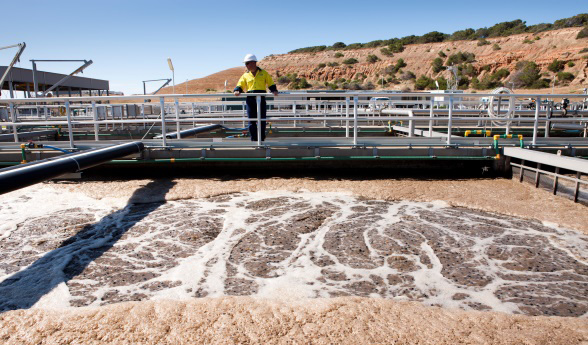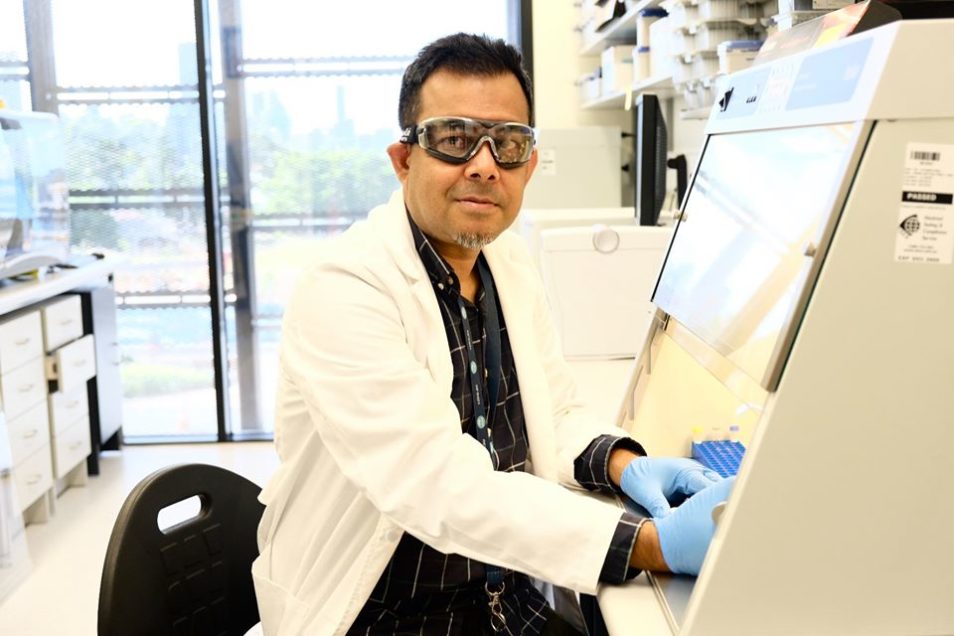
We’re tracking COVID-19 through the water at wastewater treatment plants.
There’s a sinister shadow lurking around your wastewater treatment plant. Just kidding, it’s our researchers tracking COVID-19 in the sewage water. They’re in hot pursuit of SARS-COV-2, the virus that causes COVID-19. They want to see if it’s present in our toilet flush. So they’re stealthily stalking it through wastewater to reveal its presence.
Under surveillance
We’ve detected fragments of the SARS-CoV-2 virus in wastewater. More specifically, we can pinpoint when and where the virus is lurking in our communities.
Importantly, we can track the virus regardless of whether infected people are showing symptoms or not. It’s a critical new (s)tool to support our nation’s recovery. Our Land and Water Science Director, Dr Paul Bertsch said we can assess infection flare-ups through wastewater.
“Authorities can use this information to understand the scale and location of infections. And to inform their public health measures,” Dr Bertsch said. It’s a useful way to trace the virus when a large number of infected people don’t show symptoms. So this method reveals traces in our towns and cities. We can even trace it on long-haul aeroplanes and in nursing homes.

The process of testing for COVID-19 in wastewater.
COVID-19 in the water
Working with the University of Queensland, our researchers are looking for cheaper ways to test our wastewater. More specifically, the genetic signatures of the novel coronavirus. They use samples of the untreated sewage flowing into wastewater treatment plants. This carries the unviable virus fragments shed by humans.
Worldwide wastewater monitoring could save up to US$1 billion. But, this depends on the frequency of sampling and population, according to the latest research. Wastewater monitoring is cheaper and faster than clinical screening for COVID-19. But, it would be used in addition to clinical testing of individuals.
In April, we published the world’s first peer-reviewed paper, proving it could be done. And now, we’ve shared our work to find the best testing methods. Testing involves extracting fragments of the virus’s RNA.

Dr Warish Ahmed in his CSIRO laboratory at Brisbane’s Eco-sciences precinct.
Seven ways of concentration
The latest findings were published this month in The Science of the Total Environment. Our lead researcher, Dr Warish Ahmed said they compare seven ways of concentrating the virus fragments to find the most effective methods.
“Concentrating samples with minimal pre-treatment can provide rapid, cost-effective and relatively straightforward detection of the virus,” Dr Ahmed said.
“We’ll keep refining the concentration methods to get more accurate assessments of how much of the virus is in wastewater. This gives us important information on the prevalence of COVID-19 in the community,” he said.
A global passage
Our results are feeding into a new global collaboration hub called COVID-19 WBE Collaborative. It brings together more than 50 global wastewater experts. Together, these experts coordinate and share research for current and future disease outbreaks.
And a final note based on our knowledge of COVID-19 in water. Drinking water is very well protected against all viruses, including the new SARS-CoV-2 virus.
So, at the end of the day we want you to keep flushing Australia!


27th June 2020 at 6:18 pm
Very interesting but some results in laymen’s terminology would be more interesting.
19th June 2020 at 9:56 pm
This is amazing, being able to track the source in the sewage is a huge step forward in finding a cure for Covid 19.